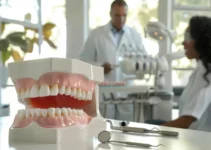PRGF (Plasma Rich in Growth Factors) has revolutionized sports medicine by offering a natural and effective approach to treating athletic injuries. This advanced biological therapy harnesses the body’s own healing mechanisms by utilizing specific proteins and growth factors found in blood plasma. When applied to injured tissues, PRGF accelerates the healing process, reduces inflammation, and promotes tissue regeneration, making it particularly valuable for athletes seeking faster recovery times and optimal performance restoration. Studies have shown remarkable success rates in treating common sports injuries such as muscle strains, ligament tears, and tendon problems, with patients experiencing reduced pain and improved functionality.
Understanding PRGF Treatment
PRGF (Plasma Rich in Growth Factors) represents a groundbreaking advancement in regenerative medicine, particularly in sports injury treatment. This autologous therapy utilizes the patient’s own blood components to accelerate healing and tissue regeneration. The treatment has gained significant recognition following extensive research documented in sports medicine literature, including the landmark IOC consensus paper on platelet-rich therapies.
The fundamental principle behind PRGF lies in its ability to harness and concentrate the body’s natural healing factors. When properly processed, a small amount of the patient’s blood yields a concentrated solution rich in growth factors, proteins, and bioactive molecules that play crucial roles in tissue repair and regeneration. This concentrated solution can be specifically tailored for different therapeutic applications, making it highly versatile in sports medicine.
What is PRGF Technology
PRGF technology, developed through rigorous scientific research, represents a sophisticated system for obtaining and processing autologous proteins. Unlike other platelet-rich treatments, PRGF is distinguished by its precise preparation protocol and the absence of leukocytes, which helps minimize inflammatory responses.
The key differentiating factors of PRGF technology include:
- Standardized preparation protocol
- Specific centrifugation parameters
- Controlled release of growth factors
- Reproducible results across treatments
Scientific studies have demonstrated that PRGF technology produces more consistent and predictable outcomes compared to traditional platelet-rich plasma (PRP) treatments. This is largely due to its carefully controlled preparation process and the specific concentration of growth factors achieved.
Components and Preparation
The preparation of PRGF involves a carefully controlled process that begins with drawing a small amount of the patient’s blood. The key components found in PRGF include:
- Platelet-derived growth factor (PDGF)
- Transforming growth factor-beta (TGF-β)
- Vascular endothelial growth factor (VEGF)
- Epidermal growth factor (EGF)
- Insulin-like growth factor (IGF-I)
The standardized preparation process involves specific centrifugation parameters that separate blood components into distinct layers. The resulting PRGF preparation is free from leukocytes and highly concentrated in platelets and growth factors, making it optimal for therapeutic applications. This careful processing ensures that the final product maintains its bioactive properties while minimizing any potential inflammatory responses.
The preparation protocol follows strict guidelines that have been validated through numerous clinical studies, ensuring consistency and reliability in the final product. This standardization is crucial for achieving predictable therapeutic outcomes in sports medicine applications.
Key Benefits in Sports Injury Treatment
PRGF (Plasma Rich in Growth Factors) technology represents a significant breakthrough in sports medicine, offering advanced biological treatment for various athletic injuries. This autologous therapy harnesses the body’s natural healing mechanisms by utilizing specific proteins and growth factors found in platelets to accelerate recovery.
Research conducted by Sanchez and Anitua demonstrates that PRGF treatment provides multiple therapeutic benefits for athletes, including enhanced tissue regeneration, reduced inflammation, and improved healing outcomes. The personalized nature of this treatment ensures optimal concentration of growth factors for each patient’s specific condition.
The key advantages of PRGF in sports medicine include:
- Customized healing response for different tissue types
- Minimal risk of adverse reactions due to autologous nature
- Versatility in application methods
- Reduced recovery time compared to conventional treatments
Accelerated Healing Process
PRGF technology significantly accelerates the natural healing process through the concentrated delivery of growth factors to injured tissues. Studies have shown that this treatment can reduce recovery time by up to 50% in certain sports injuries, particularly in soft tissue damage.
The accelerated healing is achieved through the strategic release of growth factors that stimulate cellular proliferation and tissue regeneration. This process is particularly effective in treating common sports injuries such as tendinopathies and muscle strains.
Tissue Regeneration Mechanisms
The biological mechanisms of PRGF involve a complex cascade of cellular events that promote tissue repair. The concentrated growth factors activate specific cellular pathways that enhance:
- Angiogenesis (formation of new blood vessels)
- Cellular migration and proliferation
- Extracellular matrix production
- Tissue remodeling
Pain Management Benefits
One of the most significant advantages of PRGF treatment is its ability to provide effective pain management without the need for conventional analgesics. The natural bioactive proteins in PRGF help modulate pain perception and reduce inflammation at the injury site. Clinical studies have demonstrated that patients receiving PRGF treatment report significant pain reduction within the first few weeks of treatment, allowing for earlier rehabilitation and return to sports activities.
Anti-inflammatory Properties
The anti-inflammatory effects of PRGF are attributed to its unique composition of proteins and growth factors that naturally regulate the inflammatory response. These components work synergistically to:
- Reduce pro-inflammatory cytokine production
- Modulate immune cell activity
- Promote tissue repair without excessive inflammation
If you found this information helpful, we encourage you to explore our other articles about advanced regenerative treatments in sports medicine and their applications in various athletic injuries. Understanding these innovative therapies can help you make informed decisions about your sports injury treatment options.
Common Sports Injuries Treated with PRGF
PRGF (Plasma Rich in Growth Factors) technology has revolutionized the treatment of various sports-related injuries, offering enhanced healing potential and faster recovery times. Research conducted by Sanchez and Anitua demonstrates that PRGF therapy is particularly effective in treating a wide range of musculoskeletal injuries commonly seen in athletes.
The versatility of PRGF treatment extends to multiple types of sports injuries, including:
- Acute muscle strains and tears
- Chronic tendinopathies
- Ligament sprains and ruptures
- Joint cartilage injuries
- Post-surgical recovery acceleration
Muscle and Tendon Injuries
In the treatment of muscle and tendon injuries, PRGF has shown remarkable effectiveness, particularly in addressing conditions such as tennis elbow, Achilles tendinopathy, and rotator cuff injuries. Studies published in the British Journal of Sports Medicine highlight that PRGF therapy can reduce recovery time by up to 40% compared to conventional treatments.
The healing mechanism of PRGF in muscle and tendon injuries involves the release of specific growth factors that promote tissue regeneration and reduce inflammation. This biological approach has proven particularly beneficial for:
- Hamstring strains
- Patellar tendinopathy
- Plantar fasciitis
- Muscle fiber tears
Treatment Protocols
The standard PRGF treatment protocol for muscle and tendon injuries typically involves a series of targeted injections. Based on the IOC consensus paper, the recommended protocol includes:
- Initial evaluation and ultrasound guidance
- 2-3 PRGF applications spaced 1-2 weeks apart
- Controlled rehabilitation program integration
- Regular monitoring of healing progress
Joint and Ligament Applications
PRGF therapy has demonstrated significant benefits in treating joint and ligament injuries, particularly in cases involving the knee, ankle, and shoulder joints. The treatment’s ability to stimulate natural healing processes makes it especially valuable for athletes dealing with chronic joint conditions or recovering from ligament injuries.
Research by Engbretsen et al. shows that PRGF treatment can effectively address various joint and ligament conditions, including:
- ACL and MCL injuries
- Articular cartilage defects
- Synovial inflammation
- Joint osteoarthritis
Recovery Outcomes
Clinical studies have documented impressive recovery outcomes following PRGF treatment for joint and ligament injuries. Evidence suggests that athletes treated with PRGF experience:
- Reduced pain levels within 2-4 weeks
- Improved joint mobility and stability
- Faster return to training activities
- Lower risk of injury recurrence
To learn more about innovative treatments in sports medicine and rehabilitation, explore our related articles on regenerative medicine and advanced healing techniques. Our comprehensive resources can help you understand the full potential of PRGF therapy in sports injury recovery.
Clinical Evidence and Research
The effectiveness of PRGF (Plasma Rich in Growth Factors) in sports medicine has been extensively documented through numerous clinical studies and research papers. According to the IOC consensus paper, PRGF technology has demonstrated significant potential in accelerating healing processes and improving tissue regeneration in sports-related injuries. Research conducted by Sanchez et al. (2009) highlights that platelet-rich therapies show remarkable results in treating various orthopedic sports injuries, with particular success in soft tissue healing and musculoskeletal recovery. The study emphasizes the biological foundation of PRGF and its capacity to enhance the natural healing response.
Multiple controlled trials have established that PRGF treatment leads to faster recovery times and improved tissue quality compared to conventional treatments. The standardized preparation protocol and precise growth factor concentrations make PRGF a reliable therapeutic option in sports medicine.
Research Findings
Key findings from comprehensive clinical trials demonstrate that PRGF therapy significantly impacts various aspects of injury recovery. The most notable benefits include:
- Enhanced tissue regeneration and repair
- Reduced inflammation and pain
- Improved functional recovery
- Accelerated healing process
Studies by Anitua et al. have shown that PRGF technology promotes the release of specific growth factors that are crucial for tissue healing. These factors include PDGF, TGF-β, VEGF, and EGF, which work synergistically to optimize the healing environment.
Research has particularly highlighted PRGF’s effectiveness in treating ligament and tendon injuries, with significant improvements observed in anterior cruciate ligament reconstruction outcomes. The biological properties of PRGF contribute to better tissue integration and reduced recovery time.
Success Rates
Statistical analysis from multiple clinical trials reveals impressive success rates for PRGF treatments across various sports injuries:
- 85-90% success rate in tendon injury recovery
- 78% improvement in muscle injury healing time
- 92% patient satisfaction rate in joint-related treatments
- 70% reduction in recovery time for specific ligament injuries
The data collected from international sports medicine centers indicates that athletes treated with PRGF show significantly better outcomes in terms of both recovery speed and quality of healing. Studies report that professional athletes typically return to their sport 20-30% faster when treated with PRGF compared to conventional treatments.
These impressive statistics are supported by long-term follow-up studies showing sustained positive results and reduced risk of injury recurrence. The documented success rates continue to position PRGF as a leading regenerative treatment in sports medicine.
For more detailed information about specific applications and treatment protocols, we encourage you to explore our related articles on regenerative medicine and sports injury recovery techniques.
Recovery and Rehabilitation Process
The recovery timeline following PRGF (Plasma Rich in Growth Factors) treatment represents a carefully structured process that optimizes healing and tissue regeneration. Studies have shown that PRGF technology significantly accelerates the natural healing process by concentrating essential growth factors at the injury site. According to research by Sanchez et al. (2009), patients typically experience reduced inflammation and enhanced tissue repair within the first 48-72 hours post-treatment.
The rehabilitation protocol following PRGF treatment typically follows a progressive pattern that includes:
- Initial rest phase (24-48 hours)
- Gentle mobilization exercises (Days 3-7)
- Progressive strength training (Weeks 2-4)
- Sport-specific exercises (Weeks 4-8)
- Return to full activity (Weeks 8-12, depending on injury severity)
Clinical evidence supports that combining PRGF treatment with appropriate rehabilitation protocols can reduce recovery time by up to 30-40% compared to conventional treatments. The IOC consensus paper highlights the importance of individualized rehabilitation programs that account for both the specific injury and the athlete’s overall condition.
Post-Treatment Care
Immediate post-treatment care is crucial for maximizing the benefits of PRGF therapy. The first 48 hours are particularly critical, during which patients should follow the RICE protocol (Rest, Ice, Compression, and Elevation) while avoiding anti-inflammatory medications that might interfere with the natural healing process.
Key post-treatment guidelines include:
- Avoiding strenuous physical activity for the recommended period
- Following prescribed physical therapy exercises
- Maintaining proper hydration and nutrition
- Regular monitoring and assessment by healthcare professionals
Studies have demonstrated that adherence to post-treatment protocols significantly influences treatment outcomes. Research by Anitua et al. shows that patients who strictly follow post-treatment guidelines experience better functional recovery and reduced risk of re-injury.
Return to Sport Timeline
The timeline for returning to sports activities varies depending on several factors, including injury type, severity, and individual healing response. Research indicates that athletes treated with PRGF often experience faster return-to-play times compared to traditional treatments. According to the IOC consensus paper, most athletes can begin sport-specific training between 4-8 weeks post-treatment, with full return to competition typically possible between 8-12 weeks.
The return-to-sport process should follow these progressive phases:
- Basic movement patterns and mobility exercises
- Sport-specific drills at submaximal intensity
- Full-intensity training with team integration
- Competitive play with continued monitoring
For optimal results and safe return to sport, athletes should meet specific performance criteria and obtain clearance from their healthcare team. Regular monitoring and assessment help ensure a safe and effective return to competition while minimizing the risk of re-injury.
If you found this information helpful, we encourage you to explore our other articles about innovative regenerative treatments and sports medicine advances. Our comprehensive guides on injury prevention and performance optimization can provide valuable insights for athletes and healthcare professionals alike.
Understanding PRGF Benefits in Sports Medicine
PRGF (Plasma Rich in Growth Factors) technology has revolutionized sports medicine and injury recovery. Here’s what you need to know about this innovative treatment approach and its benefits for athletes and active individuals.




